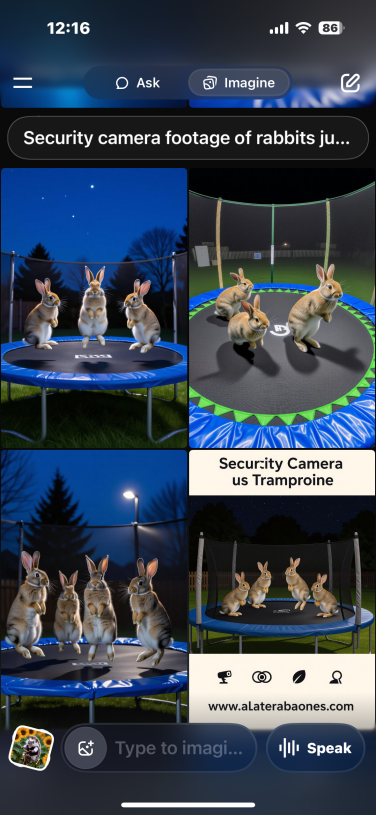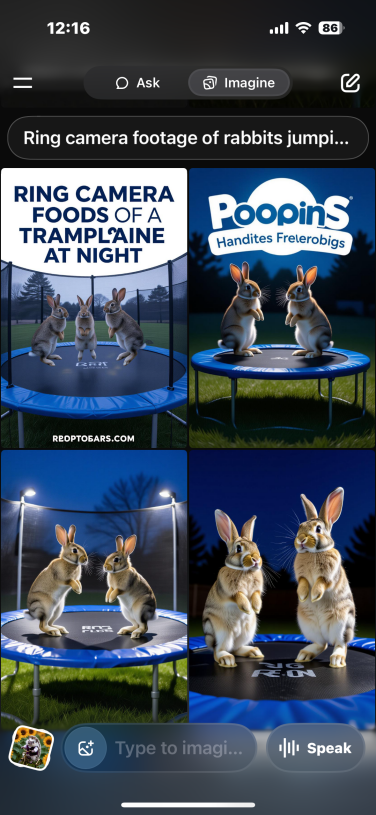
Elon Musk’s Grok Imagine: A New Era for AI in Image and Video Generation
Introduction to Grok Imagine
Over the weekend, Elon Musk’s artificial intelligence venture, xAI, unveiled its latest innovation: Grok Imagine. This generative AI tool allows users to create images and videos seamlessly. Currently, Grok Imagine is accessible to paid subscribers of xAI via the Grok app, available on both iOS and Android platforms.
The Buzz on Social Media
Musk has been actively promoting this project on X (formerly Twitter), showcasing photos and videos generated by users of Grok. Among these shared creations, Musk has also highlighted some somewhat NSFW content, referred to as "Spicy" within the app, sparking discussions about the boundaries of content moderation in AI-generated media.
Navigating the AI Video Landscape
The advent of AI video technology marks a thrilling—and, for some, daunting—chapter in the evolution of artificial intelligence. Proponents argue that this technology could streamline the creative process for artists and even reduce filmmaking costs. Yet, critics raise alarms about the potential for misuse, including the risk of misleading deepfakes and rampant misinformation in media.
A Competitive Era for AI Tools
With that contentious backdrop, it’s crucial to evaluate how Grok Imagine measures up against established rivals. Thus far, Google’s Veo 3 stands out with its lifelike video capabilities, while OpenAI’s Sora and Midjourney have also launched their own innovative AI video tools.
Initial Impressions of Grok Imagine
Given the hype surrounding Grok Imagine, expectations were high. However, early tests suggest that it may not yet live up to its competitors. While Musk has noted that the tool "should get better every day," many users, including tech critics, have found its features lacking compared to more established platforms.
Deep Dive: Comparing Grok Imagine with Rivals
To evaluate Grok Imagine’s performance, I decided to compare it directly with Veo 3, Sora, and Midjourney. I prompted all four tools to generate “security camera footage of rabbits jumping on a trampoline at night.” This simple request would serve as a litmus test for each platform’s capabilities.
Understanding the Technical Differences
A fundamental distinction lies between Grok Imagine and its competitors. Google’s Veo 3 excels at generating videos directly from text prompts, allowing users to describe what they want to see and letting the system do the rest. On the other hand, Grok Imagine and Midjourney start with text-to-image generation, requiring users to create or upload an image before animating it into a video. This inherent limitation means Grok Imagine is already at a disadvantage.
Analyzing the Results
After conducting my test with Grok, I was left somewhat disappointed with the output. The images generated were disappointing, failing to capture the essence of the prompt fully. For reference, here’s what Grok produced.


Comparison with Rivals
In contrast, both Veo 3 and Sora produced significantly superior results for the same prompt. Their outputs were captivating and felt far more aligned with what users would expect from an advanced AI tool.
The Audio Factor
Another area where Grok Imagine falls short is in audio capabilities. While Veo 3 can create sound effects and realistic dialogue synchronized with the visuals, the audio in Grok Imagine videos tends to be rudimentary, often limited to nonsensical sounds rather than coherent dialogue.
Potential and Limitations of Grok Imagine
Musk has drawn comparisons between Grok Imagine and some of the more joyous, shareable platforms of the past, like Vine. He suggested that the app is designed for creating fun content. While this may appeal to some, it appears the tool’s primary strengths lie in generating memes and anime-related content, categories where it indeed excels.
Speed: A Notable Advantage
One area where Grok Imagine does shine is speed. Users have reported that Grok produces images and videos much more rapidly than its rivals, providing a quick turnaround that could be valuable for creators needing fast results.
User Adoption and Response
Initial user feedback has been mixed. While some users are impressed by the speed and potential for meme creation, others share concerns regarding the app’s limitations compared to competitors. It raises the question of whether Grok Imagine can truly carve out a niche for itself amid such strong competition.
Closing Thoughts: Is Grok Imagine Worth It?
As it stands, Grok Imagine appears to be a promising tool, but it still has a long way to go before achieving parity with its competitors like Veo 3 and Midjourney. While the potential for rapid growth exists, particularly with ongoing updates and user feedback, the current offering feels somewhat underwhelming for those seeking high-quality video generation.
Ultimately, Grok Imagine’s strength lies in its ability to create rapid, playful content, but its shortcomings in image quality, audio capabilities, and comparative flexibility might limit its adoption for more serious creative endeavors.
Conclusion
Grok Imagine is an ambitious step forward for Musk and his team at xAI, but whether it will revolutionize the AI landscape or struggle to find its footing in a competitive market remains to be seen. For now, potential users may want to weigh the pros and cons before subscribing to see if this new tool aligns with their creative needs.
The future for AI-generated content is promising, yet caution is warranted. As technology evolves, the landscape will undoubtedly shift—offering new opportunities and challenges for both creators and consumers.
source







